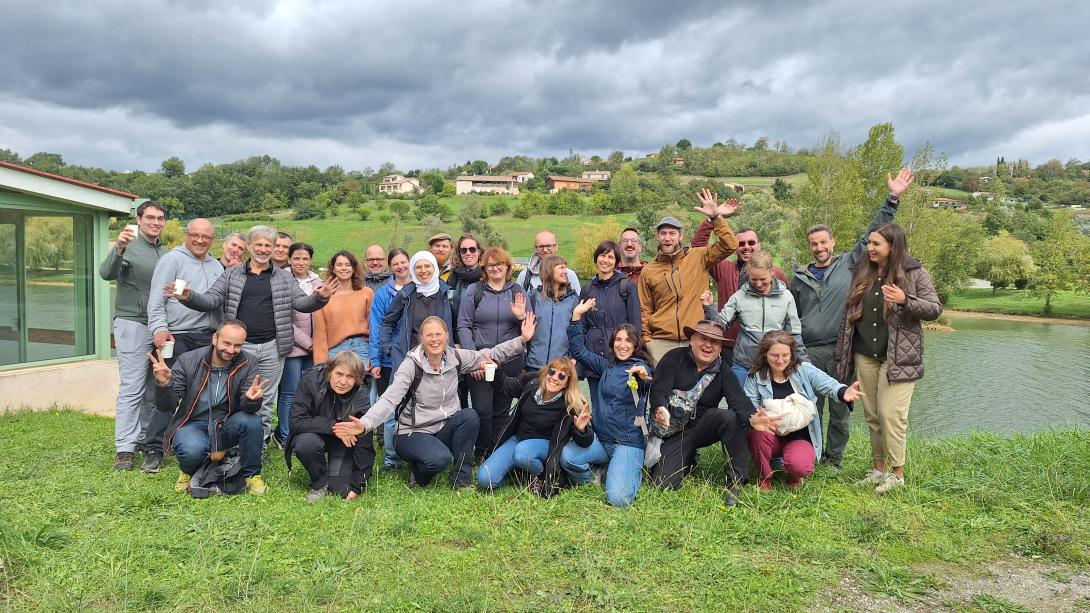From 22 to 26 September 2025, European researchers, water managers, farmers, local authorities representatives gathered in Toulouse for the General Assembly of the Horizon Europe projects SpongeScapes and SpongeWorks. This joint event highlighted Europe’s role as a living laboratory for developing and testing “sponge measures” – nature-based solutions that help landscapes absorb, store, and slowly release water to reduce floods, ease droughts, and boost biodiversity.
SpongeScapes: advancing the science
Two years into the project, SpongeScapes has already made significant contributions:
• Published a critical review of sponge functions across Europe, identifying both evidence and knowledge gaps.
• Released a series of scientific papers on topics ranging from the role of vegetation in water retention to trade-offs between floods, droughts, and biodiversity.
• Launched SpongeLabs, participatory workshops in the Netherlands and France, where stakeholders co-design land-use scenarios using an interactive GeoDesign tool.
• Hosted two well-attended webinars, with a third on hydrological modelling coming on 16 October 2025.
SpongeWorks: moving from science to action
While SpongeScapes provides the scientific foundation, SpongeWorks focuses on large-scale implementation. Its demonstration basins in France (Lèze), Greece (Pinios) and the Germany–Netherlands border (Vecht) are testing how different sponge measures perform in practice, supported by eight additional “associated regions” across Europe.
A joint field visit
As part of the General Assembly, participants explored sponge measures already implemented in the Lèze basin, where both projects are active. In the morning, they visited two agricultural plots using plant cover to improve soil health, limit erosion, and boost water infiltration. In the afternoon, attention turned to a “filtering structure” inspired by beaver dams, designed to slow water flow. Researchers from CNRS also presented their monitoring work: by measuring turbidity and conductivity, they can assess whether water runs off the surface or infiltrates underground, helping to evaluate how effective sponge measures are. The visit illustrated how scientific research (SpongeScapes) and on-the-ground implementation (SpongeWorks) complement and strengthen each other.
Looking ahead
Together with their sister project SpongeBoost, SpongeScapes and SpongeWorks form the spearhead of the EU’s efforts to improve floods and droughts resilience. This approach is at the heart of the new EU Water Resilience Strategy, which calls for action to restore Europe’s sponge landscapes.
